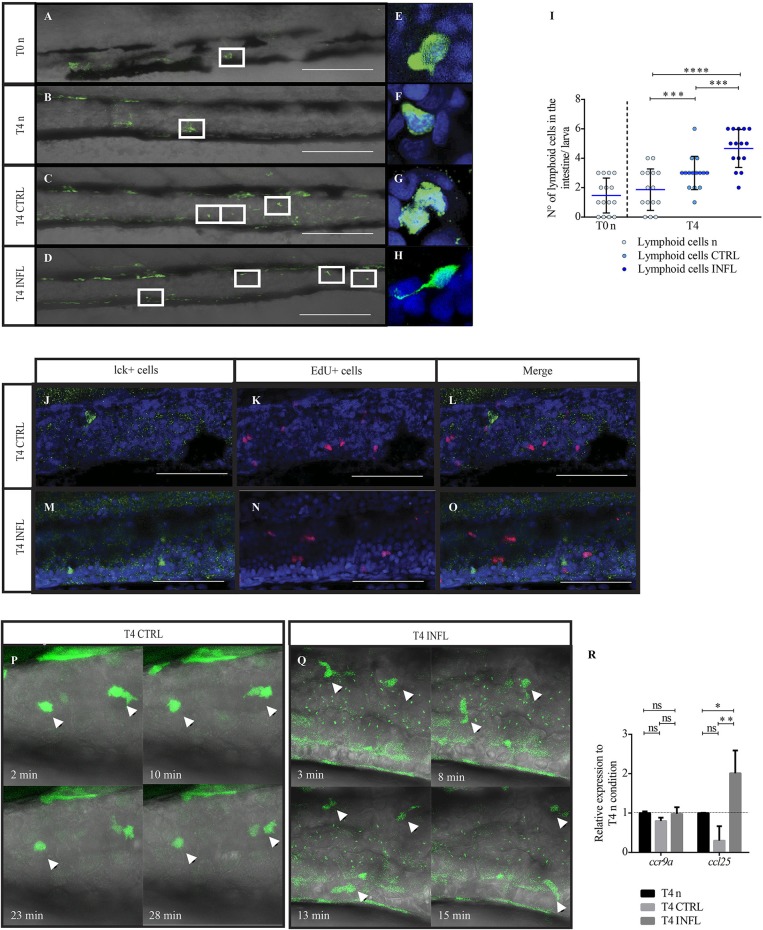Figure 3.
Lymphoid cells are present in the intestine as early as 5 dpf and are able to respond to food antigens. (A–D) Lateral view of the intestine from a Tg(lck:lck-eGFP) larva showing fluorescently labelled lymphoid cells (green). (E–H) Higher magnification of lymphocytes under the different conditions. (I) Quantification of lymphoid cells under the different conditions (n: naive; CTRL: control; INFL: inflammation) and time points (T0: 5 dpf; T4: 9 dpf). (J–O) T cells in control (J) or inflamed (M) intestine do not colocalize with EdU+ cells (K,L,N,O). (P) Example of migration of T cells (arrowhead) in a Tg(lck:lck-eGFP) larvae fed with control diet (derived from Supplementary Movie 1). (Q) Example of the migration of T cells (arrowheads) in a Tg(lck:lck-eGFP) larva fed with inflammatory diet (derived from Supplementary Movie 2). (R) Relative mRNA levels of ccl25 and ccr9a were analyzed in the intestine of control and inflamed larvae. Data was normalized against rpl13a and compared to naïve or maintenance condition (dotted line). *p < 0.05; **p < 0.01; ***p < 0.001; ****p > 0.0001. Scale bar for A–D 200 μm and J–O 100 μm. Experiments were done at least in three biological replicates with 20 individuals per condition.

